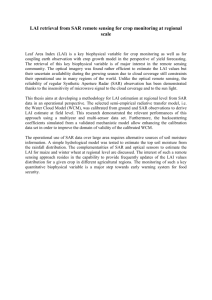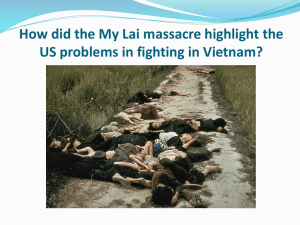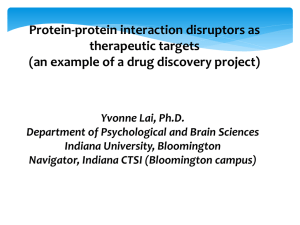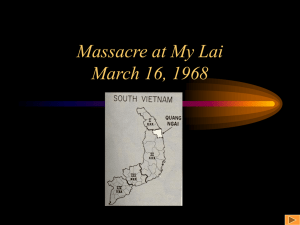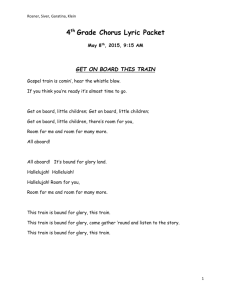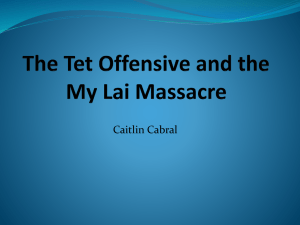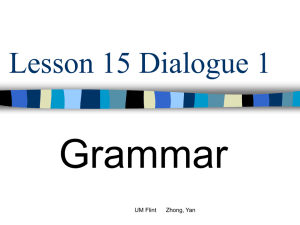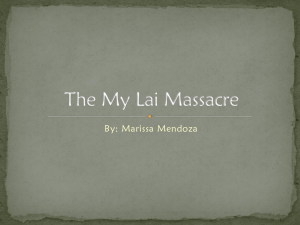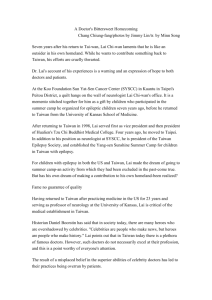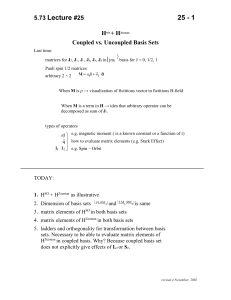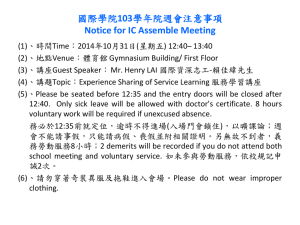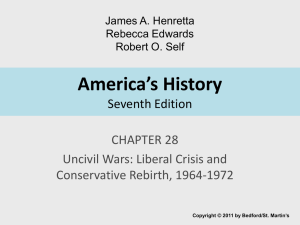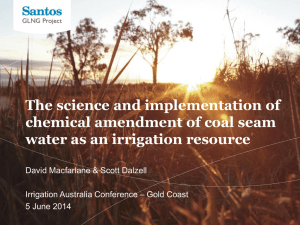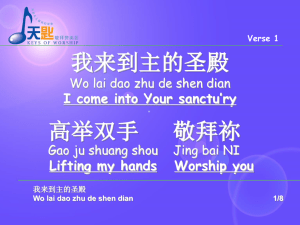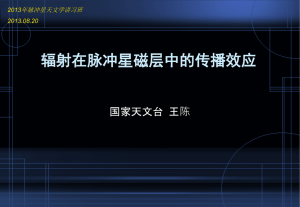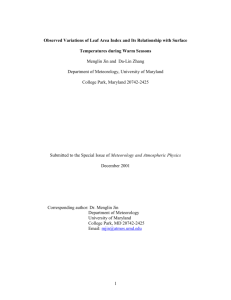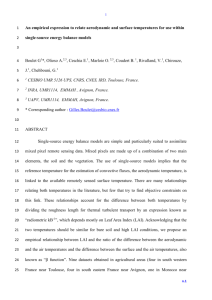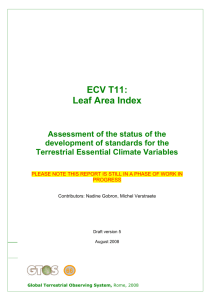Experiences with the EC-EARTH Single Column model for DICE
advertisement
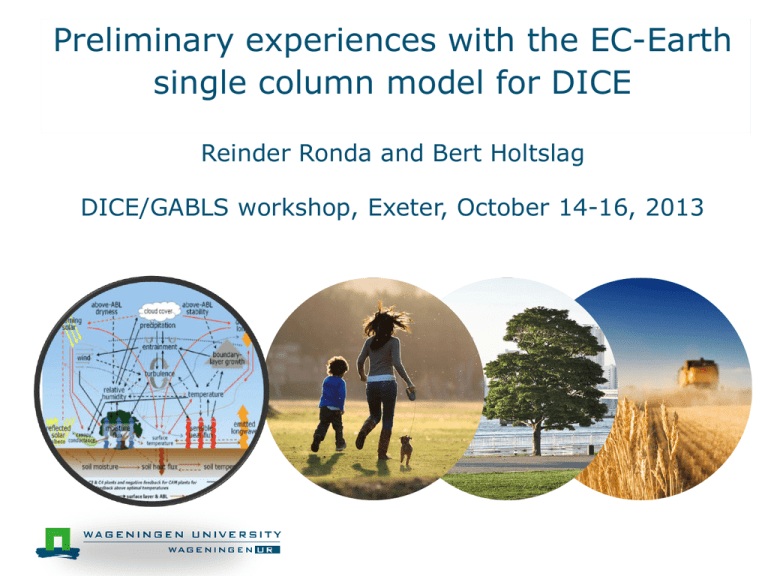
Preliminary experiences with the EC-Earth single column model for DICE Reinder Ronda and Bert Holtslag DICE/GABLS workshop, Exeter, October 14-16, 2013 EC-Earth model strategy (Courtesy Wilco Hazeleger) Use leading weather prediction model: European Centre for Medium-Range Weather Forecasts (ECMWF) Forecast System …and build into Earth System prediction system Bridge the gap between weather forecasting and climate projections (‘seamless’) Continuous development/updates Share resources & data with national and international partners (Re)forecasts, projections, science questions EC-Earth consortium Steering group: W. Hazeleger (KNMI, chair), C. Jones (SMHI), J. Hesselbjerg, Christensen (DMI), R. McGrath (Met Eireann), P. Viterbo (IM), E. C. Rodriguez (AEMET), A. Provenzale (CNR) observer E. Kallen (ECMWF), NEMO-representative The Netherlands KNMI, U Utrecht, WUR, VU. SARA Ireland MetEireann, UCD, ICHEC Denmark DMI, Univ Copenh Switzerland ETHZ, C2SM Portugal IM, U Lisbon Sweden Spain Norway AEMET, BSC, IC3 NTNU, Bjerkn. C. Belgium SMHI, Lund U, Stockholm U, IRV UCL Germany IFM/GEOMAR Italy ICTP,CNR, ENEA EC-Earth v3.0 model Atmosphere: ECMWF SFS 4: IFS cycle36r4 (physics only) Ocean: NEMO V3 (physics only) Sea ice: LIM2 Louvain la Neuve ice model Land: H-TESSEL Coupler: OASIS3 L91 vertical layers Usually run on TL 255 horizontal resolution EC-Earth Single Column Model (SCM) Atmosphere: ECMWF SFS 4: IFS cycle36r4 (physics only) Ocean: NEMO V3 (physics only) Sea ice: LIM2 Louvain la Neuve ice model Land: H-TESSEL Coupler: OASIS3 L91 vertical layers Usually run on TL 255 horizontal resolution 3 experiments Uncoupled (uc): prescribed surface fluxes (stage 1) Coupled (co): with climatological LAI (~1.5) LAI=0.15: with reduced LAI (~0.15) Soil moisture and soil temperature provide by a spinup run using H-TESSEL (IFS cy37r3) Results 1: surface energy budget Reference Coupled run overestimates latent heat flux strongly Reducing LAI to 0.15 improves latent heat flux considerably (Larry Mahrt: “grass is dead”) soil moisture in spin-up run Does soil respond to fast to atmospheric controls? Soil moisture reservoir refilled because of september rains Soil moisture well above wilting point Wilting point Prolonged drought during summer 1999 Hypothesis In reality: Prolonged dry period during summer of 1999 Dying of grass Root soil moisture approaches wilting point No regeneration of grass in wet September/October Low LAI and thus low evapotranspiration during CASES99 In Model: Prolonged dry period during summer of 1999 Root soil moisture approaches wilting point Reduction of evapotranspiration (Partial) refill of root zone soil moisture during wet September High climatological LAI and evapotranspiration during CASES99 Results 2: Profiles of potential temperature The coupled run (climatological LAI) leads to relatively cool CBLs The uncoupled run and the LAI=0.15 run give somewhat warmer CBLs Results 3: Profiles of specific humidity The coupled run (climatological LAI) leads to a relatively moist CBLs The uncoupled run and the LAI=0.15 run give somewhat dryer CBLs Results 4: evolution of PBL The coupled run (climatological LAI) leads to shallow CBLs The uncoupled run and the LAI=0.15 run give somewhat higher CBLs Results 4: evolution of PBL The coupled run (climatological LAI) and the LAI=0.15 run give Similar values of the friction velocity that are rather close to the prescribed values in the uncoupled run Conclusion “Standard” EC-Earth-SCM in coupled mode overestimates LHF during CASES99 Possibly this is due to climatological value of LAI which is too high (the dying of grass) High LHF for coupled run leads to relatively shallow, cold and moist CBLSs Bias in LHF can be reduced by decreasing LAI to 0.15 (climatological value is 1.5) Effect on friction velocity is less pronounced Thank you! 7th International Scientific Conference on the Global Energy and Water Cycle World Forum The Hague, The Netherlands 14-17 July 2014 7th International Scientific Conference on the Global Energy and Water Cycle Conference format will be similar to the 2011 WCRP Open Science Conference a. Plenary with speakers (including Land-Atmosphere Interaction Session) b. Poster sessions Call for papers soon, see www.gewex.org The Conference will be followed by Pan-GEWEX and Pan-CLIVAR Meetings

